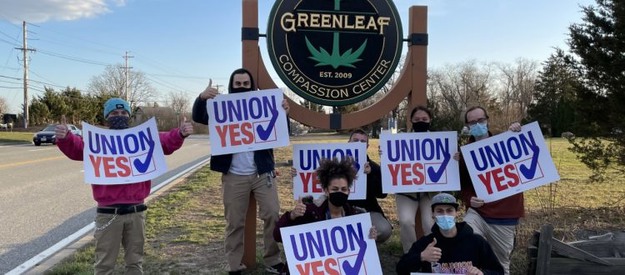One of the biggest challenges of the cannabis industry as a whole is labor. This concerns not only finding the much-needed specialized labor capable of running large-scale cultivations but also retaining labor generally speaking. As it became even more evident recently due to Covid-related challenges and the so-called ‘Big Resignation’, people decide to change jobs or companies because they want their situation to improve, from a financial standpoint, for their mental health, and so on. Such issues were present in the job market even before Covid, and especially in the cannabis industry.
Cannabis and labor
The hype trip this novel sector has created has pushed some operators to pay little attention to the importance of a stable, healthy, and happy workforce. Thus, when a person found that another cannabis company would pay them higher wages, maybe including even paid time off, going for that was a no-brainer. This concerns different parts of the supply chain. “In retail, the hardest part has been the high turnover of workers and the volatility of ownership,” says Jim Araby with UFCW, the largest private-sector union in the US, representing 1.3 million workers. “The starting pay in some of these jobs is higher than your typical retail job, but there are fewer hours for workers to access and fewer benefits on the whole. When it comes to the cultivation and manufacturing sector, it is harder to even have access to workers because the locations of these businesses are not always disclosed.”
Because of that, there has been a surge of unionization all across the board in cannabis, from retailers to growers. “When workers find out they can organize together for better working conditions, unionization increases,” Jim continues. Yet, that’s not an easy thing to do, especially in North America. “Employers do everything they can to prevent you from speaking with their workers. There are some exceptions to this rule, of course, but for the most part, the companies don’t want any form of unionization.” However, that hasn’t stopped UFCW. “UFCW locals across the US and Canada have made organizing workers in the cannabis industry a priority, so more workers are joining unions. For instance, in California alone, over 5,000 workers have been organized in the cannabis industry in the past two years, and that number is growing.”

The difficulty of unionizing
Even though UFCW is working hard to educate workers on the importance of unionizing, they oftentimes have to face great resistance from companies’ higher-ups. “The only challenge workers face when deciding to join a union is the misinformation that is out there, that is mainly spread by highly paid anti-union consultants that are hired by companies that want to remain ‘union free’,” Jim explains. When workers are not organized, it is easier for companies to exploit their labor and make a bigger profit. “One of the main reasons why companies want to remain ‘union free’ is that they want to keep the ability to make unilateral decisions on operations of the company with little regard of the impact on their workforce, and also the ability to increase profits and share them with fewer people.” Bluntly put, thanks to unions, workers – cannabis workers, in this case – can have leverage when bargaining with their employers, not only about better pay, but also about working conditions generally speaking.
“The UFCW has been able to achieve some level of protection for workers in the industry,” Jim says. “For instance, in California, there are additional health and safety protections for workers, and also protections that give workers the right to organize without interference from employers thanks to the labor peace requirement. When workers eventually organized, and we won the contracts, we have been able to achieve living wages, healthcare benefits, minimum hours guarantee, retirement savings, and a commitment to workforce development.”

Education is indeed key, and the industry is widely lacking some sort of collective effort to develop a better workforce for the future. “We would like to see an apprenticeship program created in as many states as possible,” Jim says. “In this way, there is a real investment in the industry to workforce development and career ladders. We would like to win an industry-wide pension for workers and achieve union density in the 5 major areas of the industry: retail, cultivation, manufacturing, distribution, lab testing.
For more information:
UFCW
www.ufcw.org
